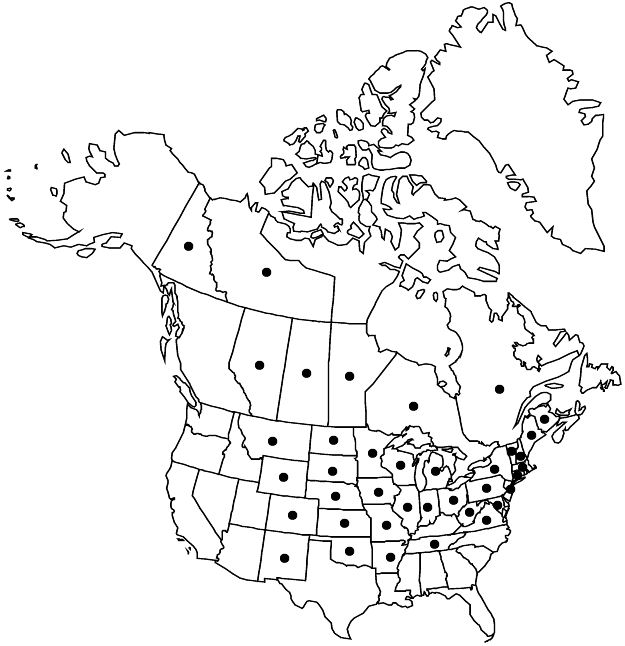Drymocallis arguta
Monogr. N. Amer. Potentilleae, 192. 1898.
Caudex branches short. Stems usually solitary, sometimes tufted, (1–) 3–10 dm; base 3–6 mm diam., ± densely, sometimes sparsely, septate-glandular. Leaves usually moderately to densely hairy; basal (6–) 12–40 cm, leaflet pairs (3–) 4–5; terminal leaflet broadly elliptic-obovate, (2–) 4–10 × (1–) 2–4.5 cm, teeth mostly double, 15–30+ per side, apex obtuse to acute; cauline 2–3, relatively well developed, leaflet pairs 2–4. Inflorescences 10–40-flowered, not leafy, congested, sometimes more elongate in fruit, 1/10–1/5 (–1/3) of stem, narrow, branch angles 5–20°. Pedicels 1–5 (proximal to 15) mm, densely short-hairy, septate-glandular. Flowers opening widely; epicalyx bractlets ± elliptic, 4–6 (–8) × 1–2 mm; sepals spreading, (5–) 7–10 mm, apex obtuse to acute, apiculate; petals overlapping, spreading, cream-white to yellowish, broadly elliptic, (5–) 7–9 × (5–) 6–8 mm, ± equal to or slightly longer than sepals; filaments 1.5–2.5 mm, anthers 0.7–1 mm; styles thickened, 1 mm. Achenes light-brown, 1 mm. 2n = 14.
Phenology: Flowering May–Aug.
Habitat: Prairies, abandoned pastures, open woodlands, shallow soil and grassy openings on ridges, slopes, bluffs, and rocky barrens
Elevation: 10–2300 m
Distribution

Alta., Man., N.B., N.W.T., Ont., Que., Sask., Yukon, Ark., Colo., Conn., Ill., Ind., Iowa, Kans., Maine, Md., Mass., Mich., Minn., Mo., Mont., Nebr., N.H., N.J., N.Mex., N.Y., N.Dak., Ohio, Okla., Pa., S.Dak., Tenn., Vt., Va., W.Va., Wis., Wyo.
Discussion
Drymocallis arguta is the only species of the genus occurring east of the Rocky Mountains, except for D. fissa in immediately adjacent prairies and the Black Hills of South Dakota. It is primarily a species of intact prairies and pasturelands throughout the Great Plains, extending as scattered populations in equivalent habitats throughout the northeastern states and adjacent provinces. Some of these states consider it a species of conservation concern (as Potentilla arguta, tall cinquefoil), and the sparsely hairy nature of some of these populations suggests that further taxonomic attention might be warranted. Drymocallis arguta occurs also in the Colorado Front Range, generally at elevations higher than D. fissa, with which it sometimes intergrades morphologically. It intergrades also with D. convallaria but tends to be larger, coarser, and more densely hairy with more acute leaflets.
Selected References
None.
Lower Taxa
"thin" is not a number."dm" is not declared as a valid unit of measurement for this property."dm" is not declared as a valid unit of measurement for this property.